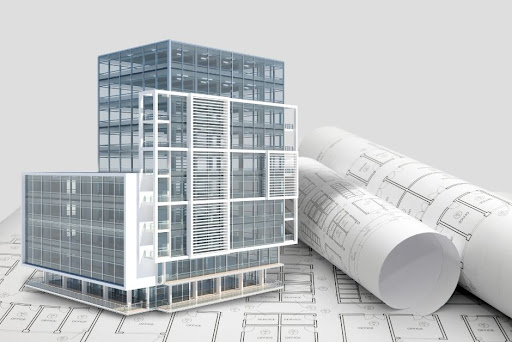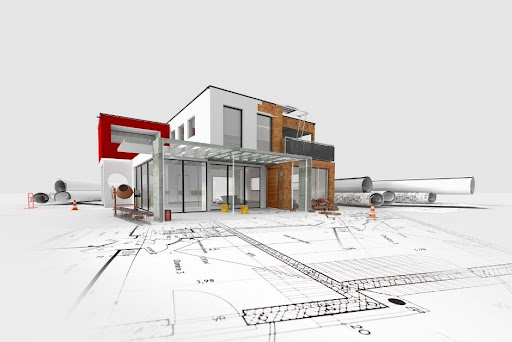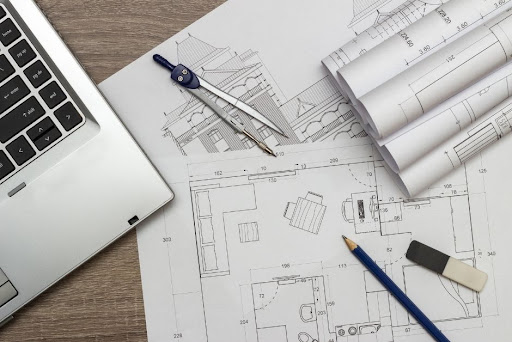In recent years, the architectural landscape has witnessed a paradigm shift with the emergence of Grasshopper, a parametric design tool, and Digital Fabrication techniques. These innovative technologies have redefined architectural practice, allowing architects to explore unprecedented levels of creativity and efficiency. In this article, we will explore how Grasshopper and Digital Fabrication are reshaping architectural design and construction.
Leveraging Grasshopper for Innovative Designs
What's in this article...
In the realm of architectural design, creativity knows no bounds. However, translating those creative visions into concrete plans used to be a challenging task. This is where Grasshopper steps in as a game-changer. With its user-friendly interface and powerful parametric design capabilities, architects can now explore new horizons in design.
Grasshopper’s parametric design involves creating algorithms that define the relationship between various design elements. This approach allows architects to experiment with different design parameters, such as size, shape, and orientation, in real-time. It’s akin to sculpting in a digital realm, where architects can fine-tune their creations with precision.
The beauty of grasshopper 3d architecture lies in its ability to generate intricate designs that respond to various factors, including environmental considerations, client preferences, and site-specific conditions. Architects can create designs that adapt to changes in sunlight, temperature, or even user behavior. This level of adaptability ensures that the final design is not just aesthetically pleasing but also highly functional.
Incorporating Grasshopper into your architectural practice may initially seem daunting, but with dedication and practice, it becomes an indispensable tool for unleashing your creative potential.

The Role of Digital Fabrication
While Grasshopper fuels the creative process, Digital Fabrication takes those imaginative designs and transforms them into tangible reality. Digital Fabrication involves the use of computer-controlled machinery to precisely manufacture architectural elements, components, and even entire structures.
The benefits of Digital Fabrication are manifold. Firstly, it significantly reduces material waste, a critical factor in sustainable architecture. Traditional construction often results in excessive waste, but Digital Fabrication minimizes this by using materials efficiently. This not only reduces costs but also contributes to a greener environment.
Secondly, Digital Fabrication greatly enhances precision. The computer-controlled machines can produce intricate components with impeccable accuracy, ensuring that the final assembly aligns perfectly with the original design. This precision is crucial, especially for complex, non-standard structures.
Furthermore, Digital Fabrication expedites the construction process. What used to take weeks or months can now be accomplished in a fraction of the time. This is invaluable in scenarios where rapid construction is required, such as disaster relief or emergency housing projects.
By merging Grasshopper’s creative prowess with Digital Fabrication’s precision and efficiency, architects can deliver projects that are not only visually stunning but also practical and sustainable.
Grasshopper and Digital Fabrication: A Symbiotic Relationship
The marriage between Grasshopper and Digital Fabrication is where architectural magic truly happens. These two technologies complement each other seamlessly, offering architects a toolkit that merges creativity with precision.
Grasshopper, with its parametric design capabilities, generates designs that were previously challenging to conceptualize. It takes into account various parameters, allowing architects to create structures that respond dynamically to their surroundings. However, Grasshopper alone can’t bring these designs to life.
Digital Fabrication steps in as the executor of these visionary designs. It takes the digital blueprints generated in Grasshopper and translates them into physical reality. Whether it’s custom-designed building components, intricate façades, or entire structures, Digital Fabrication ensures that the built product matches the creative intent.
This symbiotic relationship revolutionizes architectural practice. It allows architects to push the boundaries of what’s possible, transforming concepts into structures that defy convention. Architects who embrace this synergy find themselves at the forefront of a new era in design and construction.’

The Advantages of Grasshopper and Digital Fabrication
The adoption of Grasshopper and Digital Fabrication in architectural practice offers architects and designers a host of advantages that can’t be ignored. Here’s a closer look at the benefits:
Enhanced Creativity
Architects have long been the visionaries of the built environment, and with Grasshopper, their creativity can soar to new heights. The parametric design capabilities enable architects to explore complex, fluid, and innovative designs that were once difficult to achieve. Whether it’s designing organic forms inspired by nature or creating structures that respond dynamically to user needs, Grasshopper empowers architects to turn their wildest ideas into reality.
Efficiency
Efficiency is the backbone of any successful architectural project. Time and resources are precious commodities, and Grasshopper and Digital Fabrication help architects make the most of them. With Grasshopper, the design process becomes more streamlined and adaptive. Changes can be made on-the-fly, saving time and reducing the likelihood of costly design errors. When these designs are handed over to Digital Fabrication, the construction process becomes more efficient as well. Components are manufactured with precision, reducing the need for on-site modifications and speeding up construction timelines.
Sustainability
Sustainability is a cornerstone of modern architecture. Grasshopper and Digital Fabrication align perfectly with sustainable design principles. Grasshopper allows architects to optimize designs for energy efficiency, daylighting, and material usage. Digital Fabrication reduces waste by producing only what is needed, with minimal offcuts. Together, they enable architects to create buildings that are not only visually striking but also environmentally responsible.
Precision
In architecture, precision matters. Buildings must meet exacting standards and specifications, and even small errors can lead to costly delays and revisions. Grasshopper’s parametric design ensures that every detail is meticulously controlled, reducing the likelihood of design-related errors. Digital Fabrication takes this precision to the construction phase, fabricating components with unparalleled accuracy. This means that when architects design complex, custom elements, they can trust that these designs will be faithfully recreated in the final structure.
Embracing Grasshopper and Digital Fabrication isn’t just about keeping up with the times; it’s about unlocking new levels of creativity and efficiency that can set architectural projects apart in an increasingly competitive field. These technologies offer architects the tools to design buildings that are not only aesthetically pleasing but also functional, sustainable, and precise. By harnessing their power, architects can shape a future where innovative design and responsible construction go hand in hand.
In conclusion, Grasshopper and Digital Fabrication are reshaping the architectural landscape, offering architects unparalleled creative freedom and efficiency. By harnessing the power of parametric design and digital fabrication, architects can create structures that push the boundaries of innovation while adhering to sustainable and efficient construction practices.
As architects continue to embrace these technologies, we can expect to witness even more groundbreaking architectural marvels in the future. The marriage of Grasshopper and Digital Fabrication is driving the industry forward, opening doors to a new era of architectural excellence.










